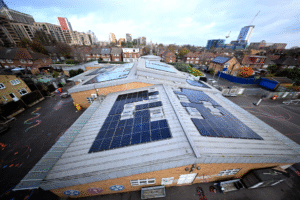Wind power set to dominate the global electricity sector in the coming decade, according to a new report published by Rethink Energy.
By the end of 2020, wind energy had an installed capacity of 756 GW. According to the report, over the next decade, the wind power market will grow three-fold, to 2,126 GW.
According to the report, China will be the largest proponent of this growth, accounting for 36% of additions over the next decade. The US represents the second-largest market, accounting for 15%.
China is also expected to lead in the emerging offshore wind sector, overtaking the UK as the world’s largest market at the end of 2020. Offshore wind is expected to account for 12% of the global wind additions.
As technology advances with larger and more efficient turbines, annual generation from the sector is also expected to increase, representing nearly 22% of the projected global electricity demand by this time.
Through the next decade, the total spend on wind installations is set to reach $1.7 trillion, accounting for less than 0.1% of global GDP, but preventing over 10% of today’s CO2 emissions.
The lead author of the report, Harry Morgan, said: ‘While Covid-19 has weighed down the growth of many sectors of the economy, wind power is one where disruption can be solely noted in the physical disruption of project installations. The vast majority of governments across the world have been accommodating of this, meaning that the global pipeline has only been dented in the sense that a few projects will be installed marginally later than expected.”
‘The pandemic will only be partially responsible for a small downturn in installations through 2021 and 2022, which will be mainly driven by the global shift towards subsidy-free auctions.
‘The surge of installations seen in the US in Q4 2021, ahead of the Production Tax Credit phase-out in the US (which has now been extended by a year), a surge of 17.4 GW of new capacity was installed – a quarterly level which is unlikely to be repeated for many years.
‘The subsequent slowdown in activity is likely to be replicated in major markets in both China and Europe, in the next two years, while the same happens for offshore wind around 2023.’
Photo Credit – Pixabay















